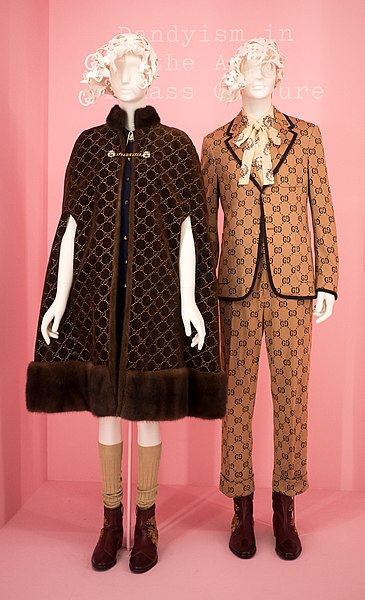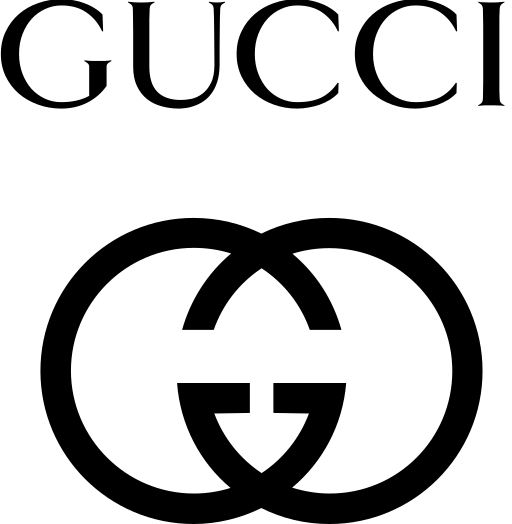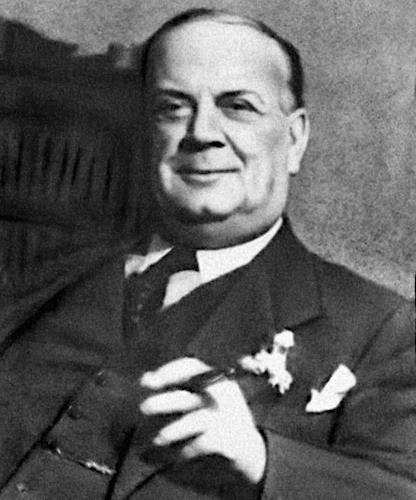Gucci has cyclically regenerated, passing through family feuds, near-bankruptcy, takeover attempts, storybook turnarounds, a public listing, and even murder — the latter of which spawned the Ridley Scott film “House of Gucci” starring Lady Gaga — yet the brand’s fascination endures.
Guccio Gucci, the originator, deliberately cultivated his allure while working as a bellboy at London’s elite Savoy Hotel in 1897. The luxury trunks and suitcases carried by the nobles staying at the hotel have inspired him to start his enterprise. Gucci, the first storyteller, connected the name with luxury and aristocratic pleasures like horseback riding, which is why the brand’s trademark horse-bit decorative feature exists.
The brand, however, was not always the picture of prosperity that it is now. Continue reading to learn how Gucci rose from humble beginnings to the top.
A Comprehensive History of the House of Gucci
Guccio Gucci, a porter at the Savoy hotel in London when he first got charmed with the magnificent bags that the guests arrived with from all over the globe, was born on March 26, 1881, to a humble Italian leather goods artisan. He subsequently returned to his hometown of Florence to work for Franzi, a prestigious luggage company, as a nod to his ancestors. After a few years, Gucci was ready to go out and launched his namesake leather goods store in Florence in 1921.
Gucci’s major business, in the beginning, was creating saddles and other equipment for horseback riders, all of which were made from the best Italian leathers. As he ventured into accessories, his designs grew in popularity, with English nobles becoming big fans of the up-and-coming firm. Gucci’s modern products retain this equestrian flair, such as the iconic horse-bit feature and the green and red woven stripe inspired by saddle elements.
In 1938, Guccio engaged his three sons—Vasco, Aldo, and Rodolfo—to join the company, and they were tasked with increasing the brand’s presence, eventually introducing Gucci to Rome and Milan.
Because leather was scarce in the mid-1930s due to Italian sanctions, Gucci began experimenting with alternate fibers. This resulted in the first Gucci print: little linked dark brown diamonds woven onto a tan hemp cloth.
Gucci workers were racing for supplies near the end of WWII and discovered utilizing Japanese bamboo to craft unusual bag handles, which gave birth to the classic Bamboo Bag in 1947. After being treated in a patented and unique manner, these burnished bamboo handles became associated with Gucci.
Guccio died in 1953, just 15 days after the opening of Gucci’s first New York boutique. Despite Guccio’s early death, his business thrived, and American shoppers warmly welcomed Gucci’s debut in the United States. Thanks to celebrities who started publicly wearing their creations, Gucci had a golden decade following that.
View this post on Instagram
Gucci moved to the East in the 1970s, establishing roots in Tokyo and Hong Kong, but the golden era appeared to be finished. Even though the Gucci brothers unveiled their first ready-to-wear collection in 1981, they were frequently at odds. Rodolfo’s son, Aritzio, had seized over and deposed his uncle Aldo, bringing the house dangerously close to bankruptcy.
But it was time to resurrect Gucci, which began with Dawn Mello’s hiring as creative director. In 1989, the previous president of Bergdorf Goodman joined the company, bringing with her a large team: menswear designer Neil Barrett, design director Richard Lambertson, and women’s ready-to-wear designer Tom Ford.
To tremendous excitement, the original Gucci loafer was revived in a kaleidoscope of hues under Mello’s direction. Unfortunately, Mello’s other designs were not well accepted, and she returned to her comfortable job at Bergdorf Goodman in 1994.
Tom Ford has been hailed as Gucci’s true savior—and with good reason. Following Mello’s departure, he became Gucci’s creative director, infusing the company with an overt sex appeal that you could not stumble on any other runway at the time. Consumers appreciated the sexy stilettos and slinky slip dresses, which stood in stark contrast to the minimalist fashion of the 1990s.
Ford took the next generation of fashion masterminds with him as his star soared, including Mario Testino as his favorite photographer and Carine as his go-to stylist. The three transformed high fashion advertising with plenty of skin-baring and racy imagery.
Ford determined it was time to move on after a fight with Pinault Printemps Redoute (the agency that bought Gucci in 2004). Alessandra Facchinetti stepped in to take head of the women’s collections at what seems like a bygone era in Gucci’s history. She only stayed with the company for two disappointing seasons before quitting in 2005.
Frida Giannini stepped into the spotlight as a result of her absence. She had been with the luxury brand since 2002 when she was employed as the director of handbags (here’s our ultimate guide to the handbag) at the tender age of 24—a lucrative field for Gucci. She was later appointed to handle the entire accessories area, and Giannini’s huge success there paved the way for her to become CEO.
During Giannini’s tenure, there was some controversy. She revealed in 2011 that she had been in a two-year covert romance with Gucci’s CEO at the time, Patrizio di Marco, after much hot conjecture about their reported relationship.
But, as her collections became more boring, she was fired off due to dwindling sales and poor reviews. Di Marco was likewise fired a few days later.
Michele seems to have been snatched from obscurity for such a pivotal role when Gucci announced his appointment in 2015. He had, however, worked with the organization for almost 12 years and was eager to get started.
Michele made his first major move when he discarded Giannini’s final men’s collection and entirely revamped it just five days before the Fall/Winter 2015 runway show. His first womenswear collection debuted on the Milan runway a month later and was immediately hailed as a spectacular success.
Michele has transformed Gucci into a maximalist dream in the four years since assuming the role of creative director, with collections that seem to pour from his vision onto an intricately crafted catwalk. Michele has restored Gucci to its “it” reputation under Ford, with ruffles, crystals, baby dragons, brilliant color schemes, and false heads, as well as constant pop culture references and an intuitive sense of social consciousness.
Michele has discovered a significant way of paying homage to the brand’s storied legacy while being in a perpetual state of forward-thinking and constant invention. Gucci Garden, designed by him, opened at Florence’s ancient Palazzo della Mercanzia in 2018.
A museum traces Gucci’s beginnings alongside Gucci Osteria da Massimo Bottura; a restaurant decked out exclusively in the brand’s merchandise and a boutique. The rich history of this Italian company melds with the present, presenting convincing confirmation that there’s enough more history to be written at Gucci, as seen through Michele’s embellished lens (and curated by Maria Luisa Frisa).
Gucci in Popular Culture
View this post on Instagram
Eponymous Adjective
“That’s so Gucci!” and “I feel Gucci!” have become namesake adjectives used to describe something that feels like Gucci’s high-flying opulence.
The term’s first known use in this context may be found in Harper’s Bazaar’s September 1999 issue, where musician Lenny Kravitz characterizes his bedroom as “very Gucci.”
Movies
Ridley Scott confirmed House of Gucci in November 2019, a film on the Gucci family starring Adam Driver as Maurizio Gucci and Lady Gaga as Patrizia Reggiani.
On November 9, 2021, the Odeon Luxe Leicester Square in London hosted the international premiere of House of Gucci. Scott first announced this proposal in 2007. Martin Scorsese announced plans to develop a film about the Gucci family in 2000.
The Guinness Book of World Records
The Gucci Model 2000 watch set a new record by selling over one million copies in two years in 1974. The Gucci “Genius Pants” broke the record for the most expensive pair of jeans ever in 1998, after twenty years. These tattered, frayed, and African-bead-covered jeans were on the market in Milan for $3,134.
Gucci in Fashion and Style
Gucci’s standing as a well-known fashion house does not imply that it is out of date – just the contrary. Gucci CEO Marco Bazzarri told Business of Fashion that the goal from the start was to produce an exclusive product while also cultivating an inclusive society. Gucci’s strategy necessitates the creation of products that appeal to a wide range of demographics.
The company’s purpose is to profit from trends in the same way as mass-market brands do. The Italian house’s assortment mix plan must incorporate more ready-to-wear items than rivals like Yves Saint Laurent and Christian Dior to achieve this.
Nonetheless, for luxury companies that rely on sales of core groups of mostly unchanging staple products season after season, trend-driven items can provide the much-needed relevancy and excitement that keeps them at the forefront of the cultural discourse.
This strategy isn’t without its drawbacks. Consumers may be less likely to purchase staple items if companies cheapen the brand’s credibility. Gucci’s strategy took that risk over the last five years, and it paid off.
Classic vs. Fashion-Oriented
According to the Business of Fashion, Gucci’s approach is to strike the proper mix between timeless, essential pieces and fashion-oriented items. The Italian brand maintains its tradition, creating classic, always-in-style pieces while modernizing important pieces to keep up with current trends.
For decades, this has been Gucci’s response to conservative admirers — people who might not opt for a logo-embellished loafer but regard a backless version of the staple shoe as an enticing form of creative risk. Everything is possible at Gucci, whether one is looking for timeless classics or fashion-forward items.
Furthermore, Bizzarri remarked that the fashion company attempts to stick to a 30-70 new-to-carryover ratio. Some originals may become carryovers, while others may be phased out due to limited stock turnover. This technique has allowed Gucci to remain relevant and appealing to customers of all ages.
Keeping Up With the Trends
View this post on Instagram
Gucci’s strategy is to appeal to people of both genders while capitalizing on current trends. Gucci and Kering, on the other hand, have worked out how to speak to the younger age, a values-driven population looking for inclusion and empowerment. Gucci outshined its competition in terms of style, capitalizing on the mini-to-nano-bag trend.
Gucci demonstrated its inclusion goal by reimagining its iconic bags in smaller sizes and mixing classic colors with fashion-forward tones.
Sustainability
In the context of fashion, defining what “sustainable” implies can be difficult. Should we merely look at the raw materials needed to manufacture an item, or should we look at the complete manufacturing process?
In the case of Gucci, if we only look at the “eco-responsible” products designated by the fashion house, we might conclude that the Italian company isn’t doing much in terms of sustainability. However, the competition’s outcomes are even more dismal.
Kering, on the other hand, is one of the corporations leading the fashion industry’s sustainability efforts. Gucci’s operations and supply chain have been carbon-neutral since 2018, and the company has received numerous other sustainability certifications. Gucci also announced an investment in Vestiaire Collective, an online resale platform, taking another step toward sustainability.
As a result, Gucci utilizes more wool than its competitors as one of the most-used materials in its ready-to-wear collections, which is considered a more “sustainable” fabric than cotton.
Kering is well on its way to achieving its aim of making Gucci’s clothing production process 100 percent sustainable, thanks to a strict transparency policy on standards for raw materials, ethics, and sourcing.
Iconic Gucci Pieces

Today, we’ll look at some of Gucci’s most iconic products, which best define the company.
Wool Wrap Coats
Gucci wool wrap coats are a work of art, crafted of wool and alpaca fleece for added warmth, softness, and comfort. They come in many colors, but beige and fuchsia are undoubtedly the most eye-catching.
Gucci Sylvie Purse
Alessandra Miceli created the Sylvie, and true to his claims, it has proven to be a timeless piece of art, even among Gucci’s greatest. The Sylvie looks and feels as high-end as her price tag promises with its gold chain and black leather.
Gucci’s New Ace Collection
The New Ace series of sneakers, which have added a well-loved style update to the iconic Gucci sneakers, deserves special notice among the many Gucci shoes available. The White Crystals New Ace is the series’ crown gem, even though several more practical varieties are available.
Sequin Dress
The majority of us last saw this in 2017, when Beyoncé (with her enduring style) wore a gold and silk gown created with the best fabrics and metals. The Gucci Sequin dress’s availability and the price will vary. Still, without question, it has cemented its position in fashion history as one of the most iconic premium gowns of all time.
Gucci Belt by Stuart Hughes
When a belt costs almost $249,000, you know it had to be high on the list of special Gucci products over the years.
Stuart Hughes’ GG belt features many 30-carat diamonds inset in the buckle, each of which would cost a substantial fortune if purchased separately. It is the most costly belt ever created and the most expensive Gucci product ever sold.
It’s especially tough to choose favorites for labels like Gucci since everything they release is high quality. Nonetheless, each of the objects on this list is unique in its category.




